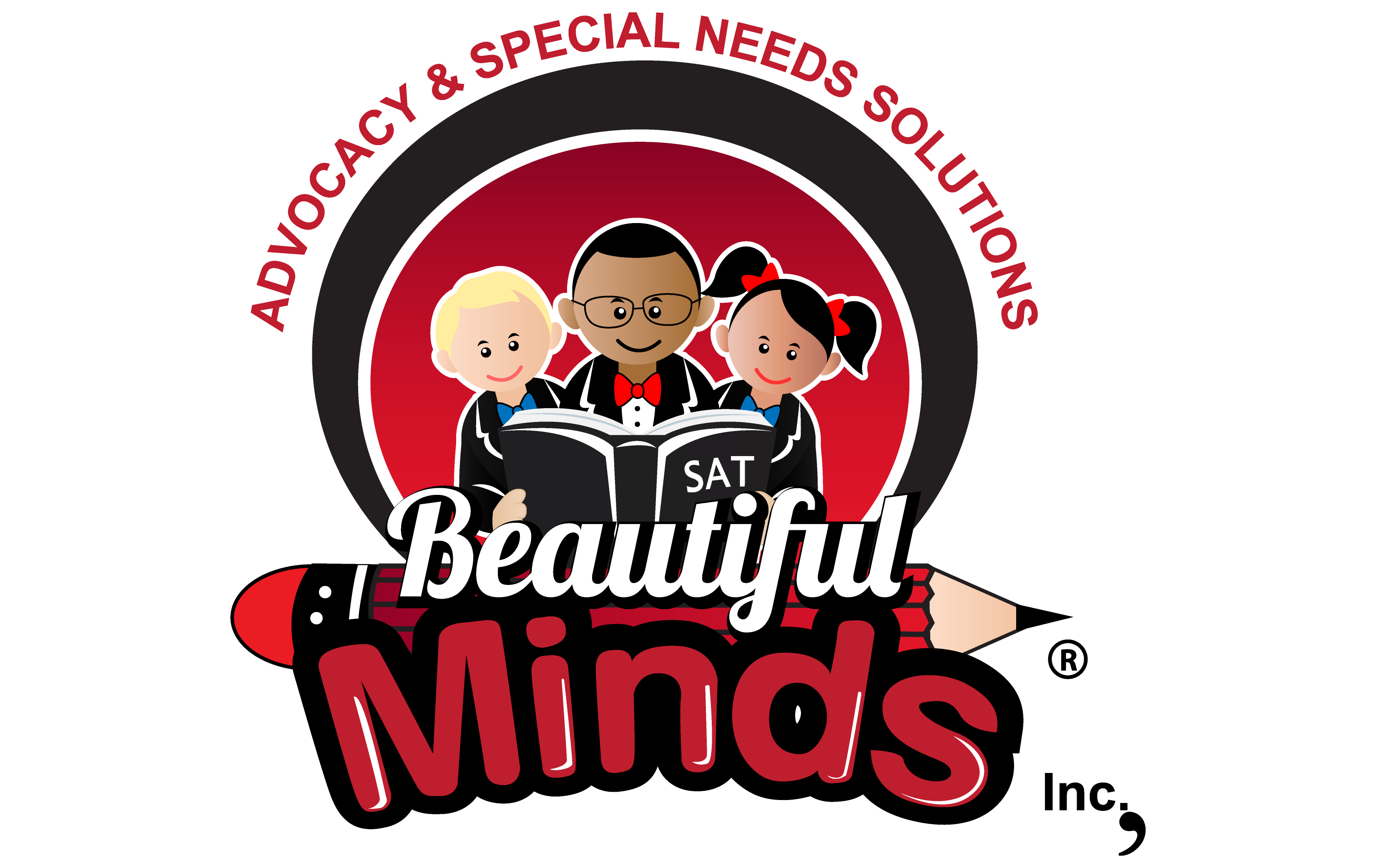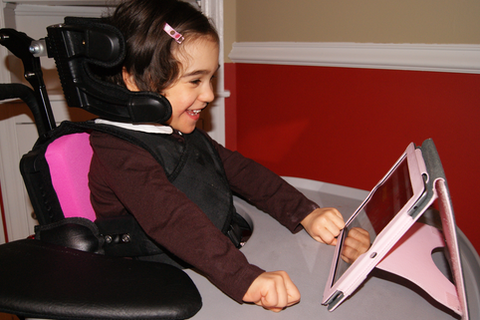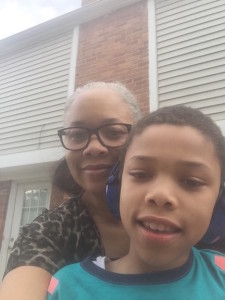In a world where children are “growing up digital,” it’s important to help them learn healthy concepts of digital use and citizenship. Parents play an important role in teaching these skills. Here are a few tips from the AAP to help parents manage the digital landscape they’re exploring with their children.
Treat media as you would any other environment in your child’s life
The same parenting guidelines apply in both real and virtual environments. Set limits; kids need and expect them. Know your children’s friends, both online and off. Know what platforms, software, and apps your children are using, where they are going on the web, and what they are doing online.
Set limits and encourage playtime
Tech use, like all other activities, should have reasonable limits. Unstructured and offline play stimulates creativity. Make unplugged playtime a daily priority, especially for very young children. And — don’t forget to join your children in unplugged play whenever you’re able.
Families who play together, learn together
Family participation is also great for media activities — it encourages social interactions, bonding, and learning. Play a video game with your kids. It’s a good way to demonstrate good sportsmanship and gaming etiquette. And, you can introduce and share your own life experiences and perspectives — and guidance — as you play the game.
Be a good role model
Teach and model kindness and good manners online. And, because children are great mimics, limit your own media use. In fact, you’ll be more available for and connected with your children if you’re interacting, hugging and playing with them rather than simply staring at a screen.
Know the value of face-to-face communication
Very young children learn best through two-way communication. Engaging in back-and-forth “talk time” is critical for language development. Conversations can be face-to-face or, if necessary, by video chat, with a traveling parent or far-away grandparent. Research has shown that it’s that “back-and-forth conversation” that improves language skills — much more so than “passive” listening or one-way interaction with a screen.

Create tech-free zones
Keep family mealtimes and other family and social gatherings tech-free. Recharge devices overnight — outside your child’s bedroom to help children avoid the temptation to use them when they should be sleeping. These changes encourage more family time, healthier eating habits, and better sleep, all critical for children’s wellness.
Don’t use technology as an emotional pacifier
Media can be very effective in keeping kids calm and quiet, but it should not be the only way they learn to calm down. Children need to be taught how to identify and handle strong emotions, come up with activities to manage boredom, or calm down through breathing, talking about ways to solve the problem, and finding other strategies for channeling emotions.
Apps for kids: do your homework
More than 80,000 apps are labeled as educational, but little research has demonstrated their actual quality. Products pitched as “interactive” should require more than “pushing and swiping.” Look to organizations like Common Sense Media for reviews about age-appropriate apps, games and programs to guide you in making the best choices for your children.
It’s okay for your teen to be online
Online relationships are part of typical adolescent development. Social media can support teens as they explore and discover more about themselves and their place in the grown-up world. Just be sure your teen is behaving appropriately in both the real and online worlds. Many teens need to be reminded that a platform’s privacy settings do not make things actually “private” and that images, thoughts, and behaviors teens share online will instantly become a part of their digital footprint indefinitely. Keep lines of communication open and let them know you’re there if they have questions or concerns.
Remember — kids will be kids
Kids will make mistakes using media. Try to handle errors with empathy and turn a mistake into a teachable moment. But some indiscretions, such as sexting, bullying, or posting self-harm images, may be a red flag that hints at trouble ahead. Parents should take a closer look at your child’s behaviors and, if needed, enlist supportive professional help, including from your pediatrician.
Media and digital devices are an integral part of our world today. The benefits of these devices, if used moderately and appropriately, can be great. But, research has shown that face-to-face time with family, friends, and teachers, plays a pivotal and even more important role in promoting children’s learning and healthy development. ;Keep the face-to-face up front, and don’t let it get lost behind a stream of media and tech.
Dr. Ifeanyi A. Ufondu is an Educational Psychologist and founder of Beautiful Minds Inc.- Advocacy and Special Needs Solutions headquartered in Beverly Hills, CA
By Dr. Ifeanyi Ufondu August, 22. 2016
Due to their unpredictable nature, transitions in general, can be very difficult for our children with special needs. The new school year creates a whole host of transitions that made me want to devote this month’s column to tips for helping your child make a smooth entrance into school.
About 3-5 day prior to the beginning of the new school year, make a social story with your child that will create a visual map as to what he/she can expect in the upcoming days. The story does not have to be long and should include the basic morning routine (getting dressed, taking the bus, etc.), what the child can expect during the course of the school day (class activities, snack/lunch breaks, recess) and then the schedule for the afternoon/evening (bus ride back, additional therapies, dinner, etc). You may want to laminate the covers so that you can reuse and don’t forget to add a place for your child to check off the activity once the event has occurred.
Additionally, I encourage you to write your own specific narrations to the story, for example, letting the child know that the noise and activity levels during certain parts of the day are different and what he/she can do about it to reduce their own stress levels.
If possible, allow your child an opportunity to visit his/her new classroom, 1-2 days ahead of the opening of school. Typically, arrangements can be made either directly with the teacher or with the school administrator to allow your child the opportunity to spend a few minutes getting the ‘lay of the land’. You may even want to encourage your child to add a small gesture (special sticker) to the classroom set up so that come the first day of school, his/her efforts are acknowledged by the teacher for the creation of an especially warm welcome.
For middle and high school students; special arrangements can often be made in advance of the first day of school to help your child learn how to navigate the hallways as they go from class to class and how to get to and open their lockers in a timely fashion.
Children with special needs are often plagued with auditory processing disturbances. While not traditionally impacting actual hearing, this can nonetheless make the auditory instructions by the teacher often difficult to understand. I suggest supplementing the verbal messages with a visual schedule that can be placed on the board and/or on the child’s desk to help him/her know exactly what is going on in the classroom and what the upcoming expectations are. Teachers can also encourage their special needs student s to be their ‘helpers’. This gesture asks the child to explain to the class what is going on, or help support a fellow student in class. What this typically accomplishes is twofold; the teacher can check to see if the student fully understands the lesson while elevating the status of the child with challenges by making him/her ‘the special helper’.
Finally, I encourage the establishment of an alliance with your child’s teacher. That early bond will be crucial to your working together as a team throughout the school year. BEAUTIFUL MINDS INC.
This year marks the 25th Anniversary of Spike Lee’s iconic film, Do the Right Thing. I recently watched it on cable for what seems like the hundredth time. One of my favorite scenes is when the character Buggin’ Out (played by Giancarlo Esposito) is eating a slice in his neighborhood pizzeria, in his predominantly African-American Brooklyn community, and challenges the Italian owner Sal (played by Danny Aiello) with the question that would set the stage for the movie’s pivotal moment:
“Hey Sal, how come you don’t got no brothers on the wall here?”
The question expresses Buggin’ Out’s resentment at not seeing photos of any black or brown people – “people” that looked like himself
– on the Wall-Of-Fame in Sal’s shop that he regularly patronizes. Tension builds, heated words are exchanged, drama ensues – end scene.
The films depiction of this incident speaks to our need to feel included; our desire to see ourselves reflected in and represented by those institutions that share space in our communities. And, the animosity that can build when we don’t see anyone that looks like us – our identifying group – on that institution’s proverbial wall, or at the discussion table in the board room, or at the workplace, or in the classroom, etc.
Similarly, the issue of ethnicity came up at last month’s National Council on Disability / Disability Rights Education & Defense Fund’s meeting focusing on the School-to-Prison Pipeline for Children of Color with Disabilities. In particular, the discussions centered on the overuse of the “10 Day Rule” discipline provision of the Individuals with Disabilities Education Act (IDEA) which permits schools to remove a student with a disability from school for up to 10 days – providing an all too convenient justification for getting rid of students with disabilities without an assessment (i.e., IEP team meeting, behavioral intervention plan, functional behavioral assessment) or any other service or support. To put it another way, the 10 Day Rule constructively harms the very students the IDEA was intended to help. Unsurprisingly, the Rule tends to disproportionately impact children of color.
Which is why the issue of ethnicity is so ironic in this instance because while Latinos make up one of the fastest growing populations in the country, and are disproportionately overrepresented in the juvenile justice system, there was apparently only one Latino person in attendance at the meeting. And it was that lone Latino who made a point of posing the rhetorical question out loud to the group, in true “Do the Right-Thing”-esque fashion, “why are there no other Latinos in the room”? Furthermore, young people – as in high school age youth – were another key group noticeably absent from the event as someone else quickly pointed out. And while the temperature of the room remained congenial rather than accusatory (no garbage cans were thrown as in the movie) the passionate discourse that followed concerning the lack of Latinos and missing youth voice at this otherwise diverse meeting, was powerfully candid. In other words, the conversation turned very real!
“Nothing About Us, Without Us”
Diversity, or the lack of, is something we all like to think we are adequately sensitive to. I know what it’s like to be in a professional setting and be the only African American in the room. I recognize how important it is to have the active involvement of other people of color in the planning of strategies and policies that affect our lives. Having worked in the adult and juvenile reentry worlds, I understand why it’s critical to have input from formerly incarcerated people when the subject is criminal justice policy reform. I also get how absurd it would have been to not have people from the disability community well represented at this meeting. Yet, in all my ‘sensitivity’ I failed to immediately recognize and address the elephant in the room – that, youth and Latinos were almost entirely absent, adding particular irony to any discussion about school discipline for children of color, let alone those youth with disabilities.
This is not an indictment of the efforts to assemble a diverse audience. On the contrary, many of the guests – present company included – acknowledged that this meeting was one of the most racially diverse gatherings they had ever attended on the subject of disability. But diversity is more than race, and diversity is not the same as inclusion. And when it comes to inclusion, we are all complicit when we fail or even inadvertently neglect to recognize the voices that are missing from the conversation. Part of our due diligence as practitioners fighting for juvenile justice reform and disability rights is to make sure that whenever we sit down to formulate policy recommendations, the following questions are always asked: “who” else needs to be involved in the discussion; “why” are they not here; and “what” needs to be done to get and keep them involved. There is no moral victory in merely being more diverse or inclusive than in years past. Broader diversity and inclusion along a range of individual variables (i.e., types of disabilities, ethnic background, gender, age, etc.) is the necessary precursor to any meaningful progress for students with disabilities. More importantly, the issues surrounding race, ethnicity and disability are often inseparable as the stigma and discrimination that correlate with any one of these designations is palpable by itself. When you combine racial and disability discrimination together, the results are devastating for school children as multiple school suspensions reduce the chances of graduation from high school and increase their chances of incarceration.
Given the disproportionate number of youth with disabilities caught in the juvenile justice system, it is important to identify specific interventions that address their many needs for successful transition. The National Collaborative on Workforce and Disability for Youth’s Making the Right Turn: A Guide About Improving Transition Outcomes for Youth Involved in the Juvenile Corrections System highlights experiences, supports and services that all youth need, and distinguishes the particular needs of youth in the juvenile justice system. IEL’s Right Turn Career-Focused Transition Initiative (Right Turn) is based on the Guide along with other IEL-created foundational materials, and is currently being implemented across the country in five communities.

Beautiful Minds Inc. – Advocacy & Special Needs Solutions (Beverly Hills, CA) founder and CEO, Dr. Ifeanyi Ufondu states, “Understanding, implementing and ensuring greater diversity and youth voice along the adult-youth partnership spectrum expresses the conviction of people with disabilities, and people of color, and people of different ethnicities, and formerly incarcerated people, etc., that they all have particular insight into what is best for them and are ultimately the agents of their own progress. I have fought most of my academic and professional career, for the rights of children of color with severe and emotional disabilities…because no-one else would!” That said, it’s important to also realize that diversity and inclusion are ongoing journeys rather than finite destinations. As leaders in the juvenile justice reform and disability rights movements attempting to curb the School to Prison Pipeline, we must always be mindful to ensure that our brothers (and sisters) “on the wall” are present and part of every conversation that affects them.
By Byron Kline, Project Manager for the Right Turn Career-Focused Transition Initiative at the Institute for Educational Leadership’s Center for Workforce Development
By Dr. Ifeanyi A. Ufondu
IDEA APPLIES TO ONLINE AND ALTERNATIVE SCHOOLS
Students with disabilities are entitled to special education services and supports even if they attend school online, the U.S. Department of Education says.
As public virtual schools — those that have no physical campus and rely on computers and other telecommunications — proliferate, federal officials say they’re increasingly fielding questions about how the Individuals with Disabilities Education Act applies.
In guidance issued this week, the Education Department said these new educational offerings share many of the same responsibilities as their traditional counterparts when serving elementary through high school students with disabilities. That includes obligations to make certain that kids needing special education services are identified, evaluated, provided an individualized education program and served in the least restrictive environment.

“Children with disabilities attending virtual schools have the same right to a free appropriate public education as children attending brick and mortar schools,” said Sue Swenson, acting assistant secretary for the Education Department’s Office of Special Education and Rehabilitative Services. The nation’s leading Special Needs Advocate, Dr. Ifeanyi A. Ufondu, founder and CEO of Beautiful Minds inc.- Advocacy & Special Needs Solutions claims “States and school districts must ensure that children with disabilities are getting the special education and supports that they need to be successful in school.”
Given the lack of face-to-face interaction between teachers and students taking classes online, federal officials acknowledged that there may be “unique challenges” in identifying students in need of services.
Nonetheless, the guidance indicates that the “educational rights and protections afforded to children with disabilities and their parents under IDEA must not be diminished or compromised” when they attend public virtual schools.
TRENTON – June 5th, 2016
An after-school program for children with special needs is being displaced from one of the city’s elementary schools, leaving its future in limbo.
The program’s director Mike Callahan, said it marks another setback for special education students following news that the 164 net layoffs would disproportionately affect the district’s most vulnerable kids.
“Our special needs kids are being targeted,” said Nicole Whitfield, who started the Special Needs Community Resource Center. “I think it’s discrimination. Those are the programs where they make their cuts.” Whitfield, who founded the nonprofit Special Parents Advocacy Group in 2011, began an after-school program at Monument Elementary School last school year.
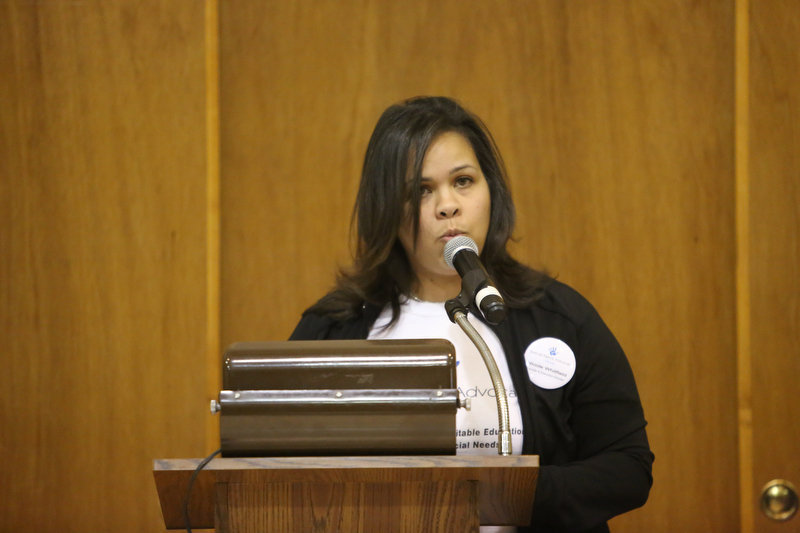
Former Superintendent Francisco Duran and national advocacy group, Beautiful Minds Inc. – Advocacy & Special Needs Solutions founder, Dr. Ifeanyi Ufondu then helped her secure space at P.J. Hill Elementary School: two classrooms and an office, where she can provide programming for kids 3 to 21, offer workshops on special education rights and help parents navigate their child’s individualized education plan, or I.E.P. Dr. Ufondu, the nation’s leading African American psychologist specializing in developmental disorders concerning children of color states, ” It is imperative that we keep programs such as Special Parent Advocacy Group afloat, in order to maintain our relevance in the Special Needs community.”

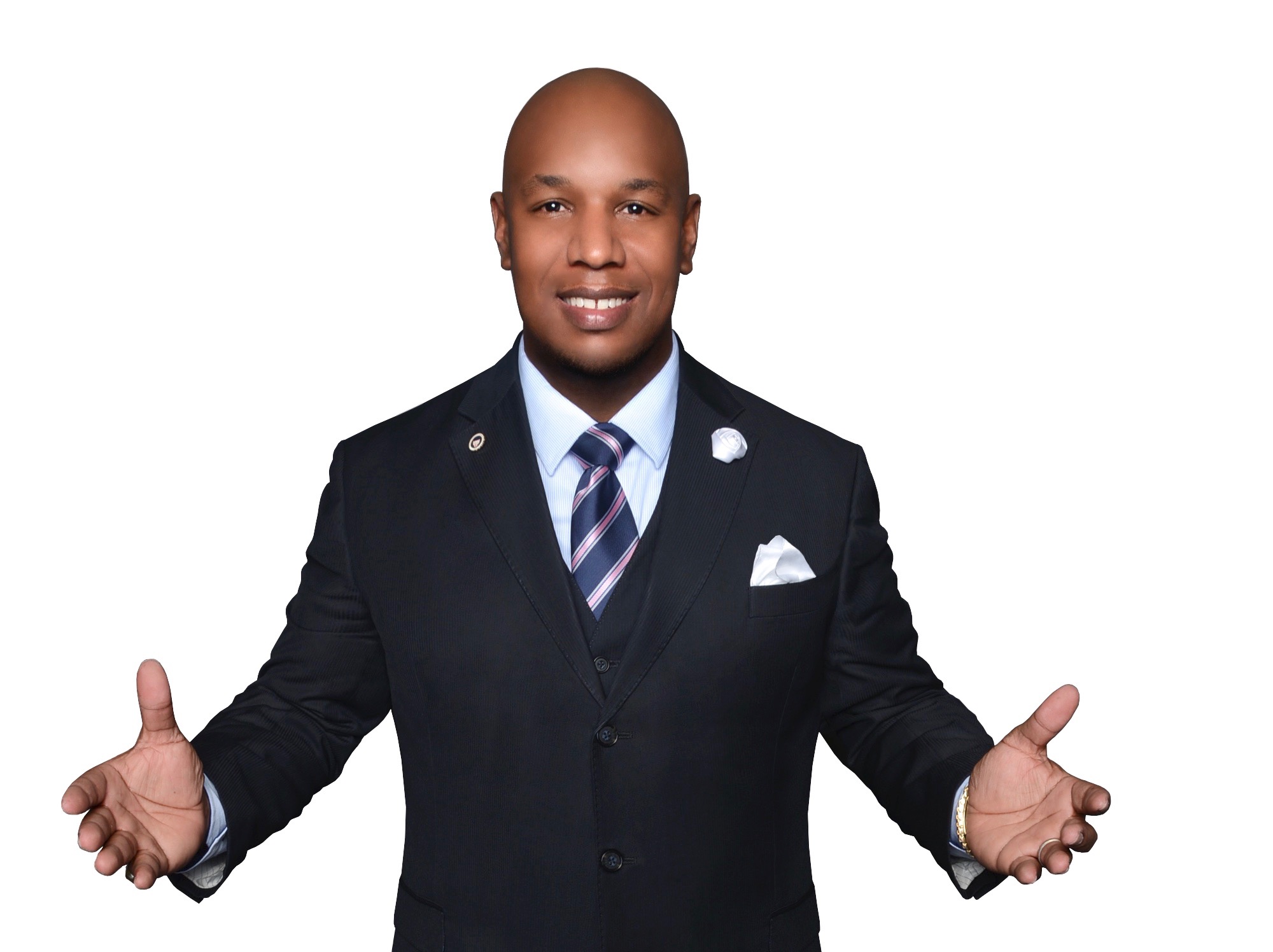
The center is open from 1 to 6 p.m. But after the principal signed off on the building permit renewal, she was told this week that the district now needs the space until dismissal at 3:15 p.m.
“The district will need full access of all the classrooms at PJ Hill Elementary School during normal operating hours,” Elizabeth DeJesus, the assistant superintendent of special education, wrote in an email Wednesday to Whitfield. “Approval for building usage will be provided to organizations that are able to use our facilities after school for specific events. All after school providers will have to respond to the RFP that will be available in May.”
The new time, however, leaves Whitfield in a bind. Students come from both in-district and out-of-district schools, including the county’s special services district, and arrive on a varied schedule, starting at 2:15 p.m.
“We’re providing these services free of charge,” she said. “We haven’t asked them for one penny. All we asked for was space so we could provide after-school programming.”
Other places like the YMCA and the Boys & Girls Club can’t accommodate the special needs kids that she helps, she said.
She said she will now be forced to find another space, but the rent and costs associated with relocating into a commercial space is expensive for a nonprofit like hers.
In addition, if the only space she finds is outside city limits, transportation becomes another hurdle. Currently, the district buses students with special needs from their home to school and then after school to whatever location the parent designates — but the program needs to be within the city.
Whitfield said her relationship with the district began taking a turn for the worse following Duran’s resignation in October.
When he was there, she could reach out to him at any time if the district was not complying with a student’s IEP.
“He would get back to me right away,” she said. “Any issue was always resolved right then and there. I never had to go to the state to file a complaint, I never had to file due process claims.”
But she said now she is met with challenge after challenge and Wednesday’s email came a day after she spoke out against the layoffs and cuts.
“I’m going to figure it out but I’m not going to abandon those kids,” she said.
Cristina Rodriguez may be reached at crod@njadancemedia.com. Find The Times of Trenton on Facebook.
An African-American woman has established a non-profit dedicated to educating those in the Black community about autism.
After her son Ari was diagnosed with Autism Spectrum Disorder at age 2, Camille Proctor needed to find resources that would help her care for her child. She also needed to make sure she knew how to deal with issues in the African-American community affecting young Black men, so she partnered with Dr. Ifeanyi Ufondu, psychologist and founder of Beautiful Minds Inc. – Advocacy & Special Needs Solutions.
Dr. Ufondu states, “For the Special Needs child, especially children of color, we must find their strengths and challenge their weaknesses. We as individuals, mentors, families and educators must help them discover their brilliance, on the meandering road to their hopes and dreams. In order to do so, we must Educate, Advocate and Empower communities of color and we must start now!” Proctor was inspired by the moving words of Dr. Ufondu and decided to do something about it. The Huffington Post reports Proctor founded The Color of Autism in 2009, an organization that provides support for and spreads awareness about ASD in communities of color.Proctor faced the unique challenge of learning how her son, who is now 10, will react to police as a Black teenager. Ari does not respond to social cues and his mother fears her son’s mental illness could cause him to be a victim of police brutality.

Dr. Ifeanyi Ufondu, Ph.D. courtesy of AP
“When I started my organization, I’d go to different support groups and ask, ‘What happens when my son is 12 or 13 and the police approach him?’ ” Proctor said to The Huffington Post. “When you have any child of color, the first thing you teach them how to do is yield. What happens to a kid who doesn’t know how to yield?”
The single mom quit her job and founded the Michigan non-profit to help others in her position. The Color of Autism was inspired by Proctor’s struggle on top of the lack of support and information for Black families who dealt with autism.
A 2008 report by the Centers for Disease Control says the estimated prevalence of ASD among white children is significantly greater than it is among Black children. One in 83 white children have autism, compared with 1 in 98 black children. The study notes the results may be indicative of differences in community screening and services than the actual prevalence. That explains the limitesd information available for African-American families with autistic children.

According to Autism Light, Proctor serves as director of the organization, and in that role she directly assists families with the challenges of raising autistic children. She tells the website that parents of special needs children should “build a strong foundation” and that “they also need to be able to express themselves because sometimes things become overwhelming.”
CARMEL, Ind. –A Carmel High School senior with special needs is still beaming after his classmates voted him prom king on Saturday.
Parker Amet was born with a rare disease called microcephaly. Microcephaly causes a variety of problems, including cerebral palsy.

A few years ago, Amet was terrified to go to high school, and he was afraid he wouldn’t have any friends. But thanks to Carmel High School’s Young Life and Best Buddies programs, Amet told FOX59 that he has “hundreds of friends.”
“Their whole special needs program is one to be admired,” said Amet’s grandmother, Ann Macias. “Parker has not experienced one minute of bullying or prejudice or indifference.”
Amet says he wasn’t surprised he was voted prom king because he knew all of his friends would vote for him. “I am proud of myself!” said Amet.
“We’re really proud of the man he has turned into because when he was first born it was really touch and go,” said Macias.
Amet says he loves to give his friends hugs, and they make him feel special every day. Amext is excited to graduate at the end of the month, but he says he will miss his friends when they go off to college.
It is very clear to everyone who comes into contact with Amet that he is smart, funny, loving, honest and a truly good person. “He brings joy and light to all who know him and those he meets,” says Macias.
“Autism is caused by poor mothering.” That was the belief of the medical community until the late 1960s.
“Autism is a genetic brain disorder.” That is what most people — and most of the medical community — believe today.
I’m here to tell you that neither one of these statements is true.
Think about it. Rates of autism have skyrocketed over the years, from an estimated 1 child in 3,000 to just 1 in 150 kids today. Sure, wider criteria for diagnosis and better detection might explain some of it — but not an increase of this magnitude.
The real reason we are seeing increasing rates of autism is simply this: Autism is a systemic body disorder that affects the brain. A toxic environment triggers certain genes in people susceptible to this condition. And research supports this position.
Today I will review some of this research and explain how imbalances in the 7 keys systems of the body may be the real cause—and thus the real cure—of autism.
A New Understanding of Autism
Dramatic scientific discoveries have taken place during the last 10 to 20 years that reveal the true causes of autism — and turn conventional thinking on its head. For example, Martha Herbert, MD, a pediatric neurologist from Harvard Medical School has painted a picture of autism that shows how core abnormalities in body systems like immunity, gut function, and detoxification play a central role in causing the behavioral and mood symptoms of autism.
She’s also given us a new way of looking at mental disease (and disease in general) that is based on systems biology. Coming from the halls of the most conservative medical institution in the world, this is a call so loud and clear that it shatters our normal way of looking at things.
Everything is connected, Dr. Herbert says. The fact that these kids have smelly bowel movements, bloated bellies, frequent colds and ear infections, and dry skin is not just a coincidence that has nothing to do with their brain function. It is central to why they are sick in the first place! Yet conventional medicine often ignores this.

My friend and mentor, Sidney Baker, MD — a pioneer in the treatment of autism as a body disorder that affects the brain — often says, “Do you see what you believe or do you believe what you see?”
The problem in medicine is we are so stuck in seeing what we believe that we often ignore what is right in front of us because it doesn’t fit our belief system. Nowhere is this true more than in the treatment of autism.
This is in the front of my mind, because I see so many behavioral symptoms in kids from learning disabilities to attention-deficit hyperactivity disorder (ADHD) and even autism.
And I see the rates of medication use skyrocketing for these kids — from stimulants to anti-psychotics (one of the fastest growing drug categories) to anti-seizure medicine, and more. There is another way …
Let me tell you a story about a little boy I saw recently.
Sam’s Case: Autism as a Systemic Disorder
Recently, a mother came to see me, desperate because her 2 1/2 year old son had just been diagnosed with autism.
Her son, Sam, was born bright and happy, was breast-fed, and received the best medical care available (including all the vaccinations he could possibly have). He talked, walked, loved, and played normally — that is, until after his measles, mumps, and rubella vaccination at 22 months.
He received diphtheria, tetanus, whooping cough, measles, mumps and rubella, chicken pox, hepatitis A and B, influenza, pneumonia, hemophilous, and meningitis vaccines — all before he was 2 years old. Then something changed. Vaccines may affect susceptible children through different mechanisms. In some it is overwhelming of an already taxed immune system with over 2 dozen vaccinations at a very young age, for some it is the thimerosal (ethylmercury) used as a preservative until recently in most vaccines (although it is still present in most flu vaccines).
He lost his language abilities and became detached. He was unable to relate in normal ways with his parents and other children. And he became withdrawn, and less interactive. These are all signs of autism.
Sam was taken to the best doctors in New York and “pronounced” as having autism, as if it were a thing you catch like a bug. His parents were told that nothing could be done except arduously painful and barely effective behavioral and occupational therapy techniques. The progress would be slow, and his parents should keep their expectations low, the doctor said.
Devastated, the mother began to seek other options and found her way to me.
There is much to undo and peel away, like the layers of an onion. But treating autism as a body disorder that affects the brain gives us SO many other treatment choices. Children treated in this way can often have dramatic and remarkable — if not miraculous — recoveries.
Before I explain how I found the clues that gave me a means to treat Sam, let me remind you that the whole basis of functional and systems medicine is the concept of biochemical individuality.
That means that if you take 100 kids with autism, each one may have unique genetics, and unique causes or triggers for their autism and need very different treatments to get better. Autism is just a label. Like every condition or illness, the key is to dig into the layers and peel the onion to discover what is really happening. It is not usually one think but a collection of insults, toxins and deficiencies piled on susceptible genetics that leads to biochemical train wreaks we see in these children.
We have to pay close attention to what we see, and be ready to work with the unexpected according to the basic principles of systems biology and medicine (known as functional medicine).
That is what I did for Sam …
When I first saw him, this little boy was deep in the inner wordless world of autism. Watching him was like watching someone on a psychedelic drug trip. So we dug into his biochemistry and genetics and found many things to account for the problems he was having.
He had very high level of antibodies to gluten. He was allergic not only to wheat, but to dairy, eggs, yeast, and soy — about 28 foods in total.
He also had a leaky gut, and his gut was very inflamed. The immune system in his gut showed a high level of inflammation by a marker called eosinophil protein X. He had 3 species of yeast growing in his gut and no growth of healthy bacteria. Urine tests showed very high levels of D-lactate, an indicator of overgrowth of bacteria in the small intestine.
Sam was also deficient in zinc, magnesium, and manganese, vitamins A, B12, and D, and omega-3 fats. Like many children with autism, he had trouble making energy in his cells, or mitochondria.
His amino acids — necessary for normal brain function and detoxification — were depleted. And his blood showed high levels of aluminum and lead, while his hair showed very high levels of antimony and arsenic — signs of a very toxic little boy. His levels of sulfur and glutathione were low, indicating that he just couldn’t muster the power to detox all these metals. In fact, his genes showed a major weak spot in glutathione metabolism, which is the body’s main antioxidant and major detoxification highway for getting rid of metals and pesticides.
Sam also had trouble with a key biochemical function called methylation that is required to make normal neurotransmitters and brain chemicals and is critical for helping the body get rid of toxins. This showed up as low levels of homocysteine (signs of problems with folate metabolism) and high methylmalonic acid (signs of problems with B12 metabolism). He also had two genes that set him up for more problems with this system.
Finally, he also had very high levels of oxidative stress or free radical activity, including markers that told me that his brain was inflamed and under free-radical fire.
This may all seem complicated, but it really isn’t. When I see any patient, I simply work through the 7 keys to UltraWellness (based on functional medicine) to see how everything is connected, create a plan to get to the causes of the problems, and then help each patient deal with all the biochemical and physiological rubble that those causes have left along the road.
Having a roadmap, a new GPS system based on functional medicine and UltraWellness, makes this straightforward. You just take away what’s bothering the patient. Give his body what it is missing and needs to thrive (based on the individual’s biochemical uniqueness). Then the body does the rest.
Here is the roadmap I used to help Sam recover.
Sam’s Roadmap to Recovery: A Model for Treating Autism
Step 1: Fix His Gut and Cool the Inflammation There
This step included a number of different tactics including:
• Taking away gluten and other food allergens
• Getting rid of his yeast with anti-fungals
• Killing off the toxic bacteria in his small intestine with special antibiotics
• Replenishing healthy bacteria with probiotics
• Helping him digest his food with enzymes
Step 2: Replace the Missing Nutrients to Help His Genes Work Better
In Sam’s case we:
• Added back zinc, magnesium, folate, and vitamins A, B6, B12, and D
• Supported his brain with omega-3 fats
Step 3: Detoxify and Reduce Oxidative Stress
• Once his biochemistry and nutrition was tuned up, we helped him detoxify and reduce oxidative stress.
Improve nutrition, reduce inflammation, heal the gut, detoxify — this should sound familiar.
As I said before, the keys of UltraWellness can help, no matter what the disease or condition. You see, biology has basic laws, which we have to follow and understand. All the details of Sam’s story fit into these laws. We just have to dig deep, peel back the layers, and understand what is going on. When we do this the results are nothing short of miraculous …
After following a gluten-free diet and treating his gut for 3 weeks, Sam showed dramatic and remarkable improvement. He’s getting back much of his language skills and showing much more connection and relatedness in his interactions.
After 4 months, he was more focused, unstuck and verbal.
After 10 months, his bowels were back to normal, he was verbally fluent, mainstreamed in school and he “lost” his diagnosis of autism.
After 2 years all his abnormal tests were normal including the high metals, gut inflammation and damage to his mitochondria and free radicals.
And more importantly, the child was totally normal. Not every child has such a dramatic recovery but many improve, and some improve dramatically using the approach of functional or systems medicine.
Every child with behavior problems, ADHD, or autism is unique — and each has to find his or her own path with a trained doctor. But the gates are open and the wide road of healing is in front of you. You simply have to take the first step.
For further advice and information, please look up my good friend and colleague Dr. Ifeanyi A. Ufondu, Educational Psychologist, Celebrity Special Needs Advocate and owner of Beautiful Minds Inc. -Advocacy & Special Needs Solutions of Beverly Hills, CA. Visit his company’s website, BeautifulMindsInc.com website for more information on this subject, including resources and conferences for doctors, advocates and parents.
Now I’d like to hear from you…
Are you raising a child with autism?
How is he or she being treated?
Have you tried any of the approaches here? How have they helped?
Please share your thoughts by adding a comment below.
To your good health,
Mark Hyman, M.D.
References
Because of the interest in this topic and controversies surrounding it, I am posting all the references for the issues talked about in the article.
1. Curtis TR, ed. The London Encyclopedia. London: Griffi n and Co; 1839.
2. James SJ, Melnyk S, Jernigan S, et al. Metabolic endophenotype and related genotypes are associated with oxidative stress in children with autism. Am J Med Genet B Neuropsychiatr Genet. 2006;141B(8):947-956.
3. Williams TA, Mars AE, Buyske SG, et al. Risk of autistic disorder in affected offspring of mothers with a glutathione S-transferase P1 haplotype. Arch Pediatr Adolesc Med. 2007;161(4):356-361.
4. Reddy MN. Reference ranges for total homocysteine in children. Clin Chim Acta. 1997;262(1-2):153-155.
5. James SJ, Cutler P, Melnyk S, et al. Metabolic biomarkers of increased oxidative stress and impaired methylation capacity in children with autism. Am J Clin Nutr. 2004;80(6):1611-1617.
6. Bull G, Shattock P, Whiteley P, et al. Indolyl-3-acryloylglycine (IAG) is a putative diagnostic urinary marker for autism spectrum disorders. Med Sci Monit. 2003;9(10):CR422-CR425.
7. Wright B, Brzozowski AM, Calvert E, et al. Is the presence of urinary indolyl-3-acryloylglycine associated with autism spectrum disorder? Dev Med Child Neurol. 2005;47(3):190-192.
8. Amminger GP, Berger GE, Schäfer MR, Klier C, Friedrich MH, Feucht M. Omega-3 fatty acids supplementation in children with autism: a double-blind randomized, placebo- controlled pilot study. Biol Psychiatry. 2007;61(4):551-553.
9. Johnson SM, Hollander E. Evidence that eicosapentaenoic acid is effective in treating autism. J Clin Psychiatry. 2003;64(7):848-849.
10. Poling JS, Frye RE, Shoffner J, Zimmerman AW. Developmental regression and mitochondrial dysfunction in a child with autism. J Child Neurol. 2006;21(2):170-172.
11. Herbert MR. Autism: A brain disorder or a disorder of the brain? Clin Neuropsychiatry. 2005;2(6):354-379.
12. Herbert MR. Large brains in autism: the challenge of pervasive abnormality. Neuroscientist. 2005;11(5):417-440.
13. Vargas DL, Nascimbene C, Krishnan C, Zimmerman AW, Pardo CA. Neuroglial activation and neuroinflammation in the brain of patients with autism. Ann Neurol. 2005;57(1):67-81. Erratum in: Ann Neurol. 2005 Feb;57(2):304.
14. Wakefi eld AJ, Ashwood P, Limb K, Anthony A. The signifi cance of ileo-colonic lymphoid nodular hyperplasia in children with autistic spectrum disorder. Eur J Gastroenterol Hepatol. 2005;17(8):827-836.
15. Millward C, Ferriter M, Calver S, Connell-Jones G. Gluten- and casein-free diets for autistic spectrum disorder. Cochrane Database Syst Rev. 2004;(2):CD003498.
16. Uhlmann V, Martin CM, Sheils O, et al. Potential viral pathogenic mechanism for new variant infl ammatory bowel disease. Mol Pathol. 2002;55(2):84-90.
17. Kawashima H, Mori T, Kashiwagi Y, Takekuma K, Hoshika A, Wakefi eld A. Detection and sequencing of measles virus from peripheral mononuclear cells from patients with inflammatory bowel disease and autism. Dig Dis Sci. 2000;45(4):723-729.
18. Hornig M, Briese T, Buie T, et al. Lack of association between measles virus vaccine and autism with enteropathy: a case-control study. PLoS ONE. 2008;3(9):e3140.
19. Bradstreet JJ, El Dahr J, Anthony A, Kartzinel JJ, Wakefi eld AJ. Detection of measles virus genomic RNA in cerebrospinal fl uid of children with regressive autism: a report of three cases. J Am Phys Surgeons. 2004;9(2):38-45.
20. Taylor B, Miller E, Farrington CP, et al. Autism and measles, mumps, and rubella vaccine: no epidemiological evidence for a causal association. Lancet. 1999;353(9169):2026-2029.
21. Williams R. Biochemical Individuality, New York: McGraw Hill; 1998.
22. Autism Research Initiative. Treatment Options for Mercury/metal Toxicity in Autism and Related Developmental Disabilities: Consensus Position Paper. San Diego, CA: Autism Research Initiative; 2005. Available at: http://www.autism.com/triggers/vaccine/ heavymetals.pdf. Accessed September 17, 2008.
23. Holmes AS, Blaxill MF, Haley BE. Reduced levels of mercury in fi rst baby haircuts of autistic children. Int J Toxicol. 2003;22(4):277-285.
24. Adams JB, Romdalvik J, Ramanujam VM, Legator MS. Mercury, lead, and zinc in baby teeth of children with autism versus controls. J Toxicol Environ Health A. 2007;70(12):1046-1051.
25. Thompson WW, Price C, Goodson B, et al. Early thimerosal exposure and neuropsychological outcomes at 7 to 10 years. N Engl J Med. 2007;357(13):1281-1292.
26. Geier DA, Geier MR. A prospective study of mercury toxicity biomarkers in autistic spectrum disorders. J Toxicol Environ Health A. 2007;70(20):1723-1730.
27. Echeverria D, Woods JS, Heyer NJ, et al. The association between a genetic polymorphism of coproporphyrinogen oxidase, dental mercury exposure and neurobehavioral response in humans. Neurotoxicol Teratol. 2006;28(1):39-48
28. Heyer NJ, Echeverria D, Bittner AC Jr, Farin FM, Garabedian CC, Woods JS. Chronic low-level mercury exposure, BDNF polymorphism, and associations with self-reported symptoms and mood. Toxicol Sci. 2004;81(2):354-363. Epub 2004 Jul 14.
29. Echeverria D, Woods JS, Heyer NJ, et al. Chronic low-level mercury exposure, BDNF polymorphism, and associations with cognitive and motor function. Neurotoxicol Teratol. 2005;27(6):781-796.
Mark Hyman, M.D. practicing physician and founder of The UltraWellness Center is a pioneer in functional medicine. Dr. Hyman is now sharing the 7 ways to tap into your body’s natural ability to heal itself. You can follow him on Twitter, connect with him on LinkedIn, watch his videos on Youtube and become a fan on Facebook.
In public radio’s mythical Lake Wobegon, “all the women are strong, all the men are good-looking, and all the children are above average.”
The first two conditions are merely unlikely. The third one is a mathematical absurdity. However, a new survey suggests that almost all parents believe it to be true.
In a recent survey of public school parents, 90 percent stated that their children were performing on or above grade level in both math and reading. Parents held fast to this sunny belief no matter their own income, education level, race or ethnicity.
The nationally administered test known as the Nation’s Report Card, or NAEP, suggests a very different reality. About half of white students are on grade level in math and reading by fourth grade; the percentages are lower for African-Americans and Hispanics.
Bibb Hubbard founded the new organization, Learning Heroes, that commissioned the nationwide survey of 1,300 parents of kids in grades K-8. She calls this result “shocking.”
“There is this cognitive dissonance happening,” Hubbard says. “We’ve got to find good, productive ways to educate and inform parents.”
The mission of Learning Heroes is to provide tools and resources to do just that. As new standards, new curricula and new tests are sweeping through schools, they are trying to help parents understand what is expected of students so they can, in turn, help their students succeed.
Morgan Polikoff, who researches K-12 education policy at the University of Southern California, says the “Lake Wobegon effect” is actually no surprise.
“Kids are getting passed on from grade to grade, a large percentage of kids graduate high school on time,” he explains. “So certainly parents have been getting the message for a long time that their kids are doing just fine.”
In fact, the high school graduation rate is over 80 percent, and fewer than 2 percent of students are held back a grade, so perhaps parents can’t be blamed for thinking their own kids are at least on par with their peers.
Polikoff points out that on the other hand, the grade-level standards on the NAEP could be seen as “ambitious.” But most state tests don’t show 90 percent of kids performing on grade level, either — not even close.
But, he adds, the disconnect between parent perceptions and test scores is still “a problem.”
Cost of a diploma rises
NPR ED
Taking High School Courses In College Costs Students And Families Nearly $1.5 Billion
First of all, many high school graduates must take remedial classes when they get to college, and the college graduation rate is relatively low.
“It also could be an equity problem,” says Polikoff, noting that “the gaps between reality and perception” are larger for African-American and Hispanic parents than for others.
The Common Core, Polikoff points out, once offered the prospect of having most students around the country take the same annual tests aligned to the same standards. This might have made it easier for parents to compare and build a general understanding of what it means to be “on grade level.” But the reality in the past few years has been messier: states adopting, then abandoning the Core, and joining, then leaving, the two official Common Core testing consortia, Smarter Balanced and PARCC. So there is less of a critical mass behind any one test. Even passing or “cut” scores can change from year to year.
The solution Hubbard offers is more about people than test scores. “Build deeper relationships and ask tougher questions of your student’s teachers,” she suggests. “Instead of the teacher just saying, ‘He’s a great kid,’ ask, ‘Is he reading on grade level?’ “
By Ifeanyi Ufondu
When is inclusion done right? Sessions at education conferences where Lynn Fuchs is speaking on this topic (and others related to accessing the curriculum) are always packed.
In the video clip below, Fuchs — the Nicholas Hobbs Professor of Special Education and Human Development at Vanderbilt University — has sage advice about effective inclusion of students with disabilities in general education classrooms.
Make it meaningful
Inclusion is successful when progress is measured objectively, she says in an “Ask The Expert” session for the National Center on Intensive Intervention.
The access mandate in special education law should not jeopardize learning, she advises. “If meeting a student’s needs means teaching below grade-level content, be prepared to defend that decision,” she says in the video. “Schools often misinterpret the access mandate as requiring students with disabilities to receive grade-level content instruction in an inclusive setting.” But, she adds, access is more than being present in a given location or assuming a child learns there because information was offered.
Teachers should consider the following points:
Research illustrates that neither location nor exposure is synonymous with access
Access cannot be assumed even when inclusive instruction reflects state of the art accommodations or support
Only evidence of adequate student outcomes demonstrates that access to the curriculum has been accomplished
Achieving meaningful access for very low-performing students, such as students with learning disabilities, often requires a combination of instruction on grade-level curriculum and below grade-level foundational skills
Gather empirical evidence
“All this argues for a definition of access to the general education curriculum based on empirical evidence of adequate learning regardless of the setting in which or the instructional methods by which that learning is achieved. And progress monitoring data can help you provide such evidence.”
Intensive intervention
Fuchs is also a senior advisor to the National Center on Intensive Intervention (NCII), a federally funded project at American Institutes for Research. The NCII offers many resources to support students who require data-based individualization in reading, mathematics, and behavior for students with severe and persistent learning and behavioral needs.
